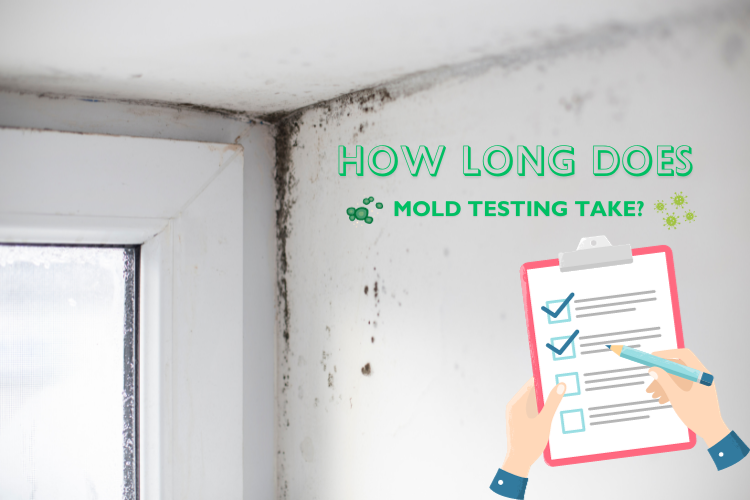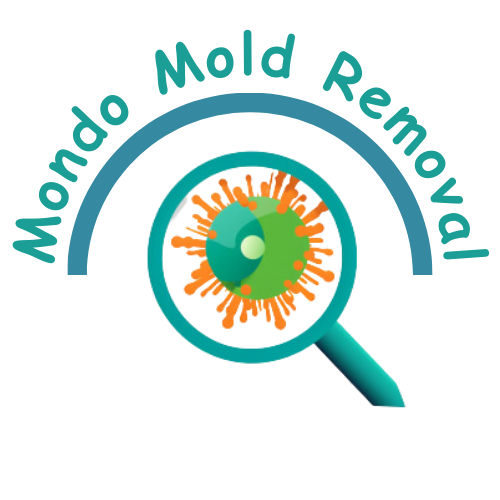If you’ve ever wondered how long mold testing takes, you’re not alone! Mold testing is an essential step in ensuring the safety and health of your living space. In this article, we will explore the duration of mold testing, shedding light on the various factors that can influence the timeframe. By the end, you’ll have a better understanding of how long you can expect the process to take and be well-equipped to tackle any mold-related concerns you may have. So, let’s jump right in and discover the ins and outs of mold testing duration!
Factors that Influence Mold Testing Duration
Mold testing is an important step in identifying and addressing mold issues in your home or workplace. The duration of mold testing can vary depending on several factors. Understanding these factors can help you better plan and manage your mold testing process. Here are some key factors that can influence the duration of mold testing:
1. Size of the Area Being Tested
The size of the area being tested plays a significant role in determining the duration of mold testing. The larger the area, the more time it will take to thoroughly inspect and collect samples. Mold testing professionals need to carefully examine every corner and surface of the area to ensure accurate results. Therefore, it is important to consider the size of the area when estimating the testing duration.
Small Areas
If you are testing a small area, such as a single room or a small section of a larger space, the testing duration is generally shorter. Mold testing professionals can efficiently inspect and collect samples in small areas, reducing the overall testing time.
Medium Areas
For medium-sized areas, such as multiple rooms or a sizable section of a building, the testing duration may be slightly longer. Mold testing professionals will carefully examine each area within the designated space to ensure thorough testing. This process may require more time compared to testing small areas.
Large Areas
Testing large areas, such as an entire building or a substantial portion of it, can be a more time-consuming process. Professionals will need to allocate sufficient time to inspect every corner, room, and surface to detect any potential mold growth. Thus, the testing duration for large areas can be considerably longer.

2. Type of Mold Testing
Mold testing can be conducted using different methods, depending on the specific needs and circumstances. The type of mold testing chosen can greatly impact the overall duration of the testing process.
Surface Testing
Surface testing involves collecting samples from visible surfaces in the area being tested. Mold testing professionals will swab, tape, or vacuum sample the surfaces to collect mold spores or visible growth. Surface testing is typically quicker compared to other testing methods since it focuses on specific areas. The duration of surface testing can vary depending on the size and complexity of the area being tested.
Air Testing
Air testing is performed to measure the concentration of mold spores in the air. It involves the use of specialized equipment to collect air samples from different locations within the testing area. Air testing provides an overall assessment of mold presence in the space. The duration of air testing can vary depending on the number of samples required and the size of the area being tested.
Bulk Testing
Bulk testing involves collecting physical samples of materials suspected of harboring mold growth. It requires removing a small portion of the material and sending it to a laboratory for analysis. Bulk testing is commonly used when the presence of mold is suspected within building materials, furniture, or other items. The duration of bulk testing can be influenced by the number and size of the samples collected.
3. Laboratory Testing Time
After collecting samples, they need to be sent to a laboratory for analysis. The time taken by the laboratory to process the samples can also impact the overall mold testing duration.
In-House Testing
Some mold testing companies have in-house laboratories where they can analyze the collected samples. In-house testing can expedite the process as the samples do not need to be shipped elsewhere. The laboratory testing time for in-house testing is generally shorter since the samples can be processed immediately.
Outsourced Testing
If the mold testing company does not have an in-house laboratory, the collected samples will be sent to an external laboratory for analysis. The turnaround time for outsourced testing can vary depending on the specific laboratory’s protocols and workload. It is important to consider potential delays when estimating the total testing duration.
4. Number of Samples
The number of samples collected can affect the testing duration. More samples require additional time for collection, packaging, and analysis. The number of samples needed will depend on the size of the area being tested, the testing objectives, and the testing method chosen.
Single Sample
When a single sample is collected, the testing process is simplified, resulting in a shorter duration. Mold testing professionals can focus on analyzing that specific sample, allowing for faster results.
Multiple Samples
If multiple samples are required, either from different areas or for different testing methods, the testing duration will be longer. Each sample needs to be properly collected, labeled, and sent for analysis, which can add significant time to the overall process.
5. Severity of Mold Growth
The severity of mold growth within the testing area can also impact the duration of mold testing. If mold growth is extensive and widespread, it may take longer to thoroughly inspect the area and collect samples. Mold testing professionals may require additional time to ensure accurate and comprehensive results.
6. Accessibility of the Testing Area
The accessibility of the testing area is another factor that can affect the mold testing duration. The ease of access to different areas within the testing site can determine how quickly mold testing professionals can inspect and collect samples.
Easy Access
If the testing area is easily accessible, with unobstructed entry to all necessary locations, the testing duration is generally shorter. Mold testing professionals can move swiftly through the area, ensuring thorough inspection and efficient sample collection.
Limited Access
In cases where the testing area has limited access, such as confined spaces or areas obstructed by furniture or stored items, the testing duration may be extended. Mold testing professionals will need to navigate and maneuver around obstacles, taking extra precautions and allocating more time for testing.
Expected Timeframes for Different Mold Testing Scenarios

The following are some generalized expected timeframes for different mold testing scenarios based on common conditions and considerations:
Surface Testing: Small Area
For a small area with surface testing only, the duration can range from a few hours to a day, depending on the size and complexity of the space.
Surface Testing: Medium Area
In the case of a medium-sized area requiring surface testing, the duration can extend to a few days to ensure comprehensive coverage and sample collection.
Surface Testing: Large Area
Testing a large area with surface testing may take several days or even weeks, considering the thoroughness required to cover the entire space.
Air Testing: Single Sample
Air testing with a single sample can typically be completed within a few hours to a day, depending on the size and accessibility of the area.
Air Testing: Multiple Samples
When multiple air samples need to be collected, the testing duration may span from a day to a few days, considering the time needed for proper sampling and analysis.
Bulk Testing: Single Sample
Bulk testing with a single sample may take a few hours to a day, depending on the size and accessibility of the material being sampled.
Bulk Testing: Multiple Samples
If multiple bulk samples are required, the testing duration can range from a day to several days, considering the time needed for proper collection, labeling, and analysis.
7. Surface Testing: Small Area
Surface testing for a small area typically takes between a few hours to a day, depending on factors such as the ease of access, complexity of surfaces, and number of samples collected.
Conclusion
Mold testing duration can vary depending on various factors, including the size of the area being tested, the type of mold testing conducted, laboratory testing time, number of samples, severity of mold growth, and accessibility of the testing area. By considering these factors, you can have a better understanding of the expected timeframe for your mold testing process. It is important to consult with a professional mold testing company to accurately assess your specific situation and determine the most suitable testing approach for your needs. Remember that investing adequate time in thorough mold testing can help ensure timely and effective remediation measures, protecting your health and property






